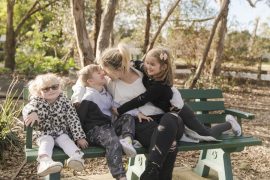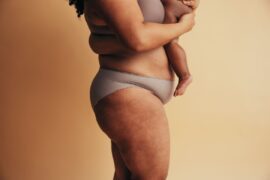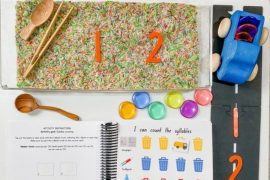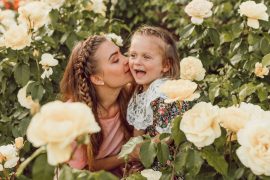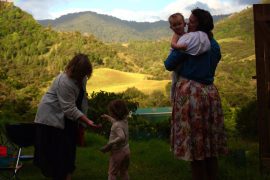Our next step can be done in tandem while raising our precious little souls, who encourage us regularly to examine our shadow self and inherited belief systems. Notice when you feel triggered. Ask yourself why? Where do you feel it? What needs to be learned? What is ready to be released? How does it want to be healed? I know most parents don’t feel like they have the luxury to do this for themselves… but if we really want to release past systems and create healthy new patterns with and for our children and future generations, we need to… and trust me, life becomes much, much easier. Like onions, there will always be more layers, but it’s important to begin. Our closest relationships are where we grow, and our dear little souls will help us grow in ways we never imagined when we are able to hear from the heart.
If like many moms, you are not sure where to begin or are concerned about cost and time involved, I invite you to join me in our live, virtual sessions every two weeks. Accessibility is very important to me, and so I offer various options to join us.
Notice when you feel triggered. Ask yourself why? Where do you feel it? What needs to be learned? What is ready to be released? How does it want to be healed?
Understanding Age Appropriateness Around Healthy Body Autonomy
From a young age, children are taught to listen to authority figures, including their parents; however, as they grow and develop, so does their understanding of self. Encouraging body autonomy means respecting a child’s ability to express their preferences and opinions about their bodies, even if those differ from the parent’s expectations. The caveat here is health and safety first.
One common area where boundaries may become blurred is in the realm of physical affection. While it is natural for parents to express love and affection through hugs and kisses, it is equally important to recognise a child’s cues and preferences. Forcing physical contact can inadvertently send the message that their feelings and comfort levels are secondary to the desires of others, eroding the foundation of body autonomy.
Communication plays a pivotal role in navigating these blurred boundaries. Establishing an open dialogue with children about their bodies, boundaries, and consent fosters an environment of trust. It encourages them to express their feelings and preferences without fear of judgment, ultimately empowering them to make informed decisions about their bodies as they mature.
As children enter adolescence, discussions about body autonomy often extend to topics such as personal health, clothing choices, and decisions that may affect their future. While parents may have valid concerns rooted in their desire to protect their children, it is crucial to strike a balance that acknowledges the child’s developing autonomy and the parent’s role as a guide in raising healthy individuals.
What are some Practical Ways We Can Empower Our Children with Healthy Body Autonomy?
Whatever stage of parenting you are at, we can still support our children. If this is your first time consciously considering this, you are not alone. With my girls as babies, I would let them know what I was about to do and watch them for cues. As an example, “I’m going to help you change your diaper now”. This is setting the expectation. As they got older, I would ask them if I could help them.
Establishing an open dialogue with children about their bodies, boundaries, and consent fosters an environment of trust.
As they grow a bit older, offering choice around food, toileting, clothing, and activities helps support their ability to think critically for and assert themselves. The power of choice usually also means less resistance, and when you do say something needs to be done, it’s not just another order – they understand it’s important. Having experienced body dysmorphia from 10 to about 25 years of age, choice around food and listening to your body is very important. I will acknowledge that sometimes this backfires. “It’s my body, it’s my choice” is a line I heard often for a stage. Agreed, it is your body and your choice. My suggestion is to make sure you’ve eaten what you feel you need to keep you full until breakfast. Bath was another common one. After missing one bath and feeling very itchy, the connection was made and the reasoning for the suggestion of bath time was understood. The same goes for not wanting to wear a jacket when it’s cold out. Sometimes the best learning comes from when we have an adverse experience, within safe boundaries.
When we are clear around our intentions and are able to uphold consistent, healthy boundaries ourselves, we are leading by example. We are able to support our children in listening to their bodies, use their critical thinking skills, voice, and make healthy choices for themselves. It starts with small choices when they are young, and through offering this foundation of mutual respect and communication, the later years are usually much easier.
The Dance of Parenting with Healthy Boundaries
The journey towards fostering body autonomy in children is a delicate dance between guidance and respect for individual boundaries. Acknowledging the blurred boundaries that may arise in the process is an essential step towards creating an environment where children feel empowered to make decisions about their bodies. By embracing open communication, actively listening to their cues, and adapting our parenting strategies accordingly, we can ensure that our children grow into individuals who not only respect the autonomy of others but also assertively advocate for their own.
References:
Little Warriors. (2023). Prevent It! https://littlewarriors.ca/prevent-it/
Katie Connolly is an award-winning Speaker and Healer. She is an Expert Registered Yoga Teacher with a Registered Children’s Yoga School, a Craniosacral Practitioner, and Masters of Counselling Candidate. Katie’s passion for sharing Somatic tools with families and educators stems from learning them as a child from her mother, to support her with anxiety, ADHD tendencies, and dealing with many challenging life experiences. Go here to join her. You can also follow Katie on Instagram.

